What is Structured Data? And Why Should You Implement It?
Structured data is a standardized way to provide information about a web page. It helps search engines like Google to better understand what your content is about.
But what’s in it for you, and how do you implement it?
Let’s get into it!
- Get rich results
- Get into Google’s Knowledge Graph
- Support semantic search
- Support your E‑A-T
1. Get rich results
Rich results are visually-enhanced search results with information pulled from relevant structured data. The most common type of rich results are rich snippets, like these:
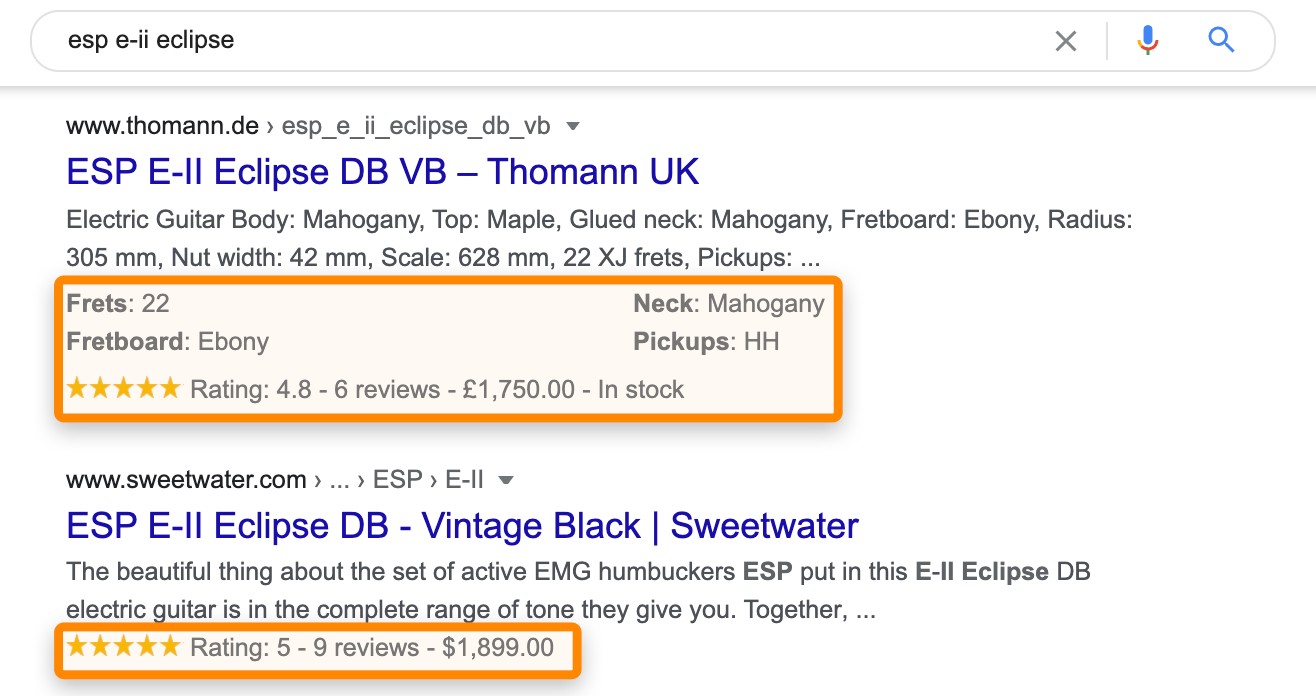
These can often boost clickthrough rates and increase organic traffic to your pages.
2. Get into Google’s Knowledge Graph
Google’s Knowledge Graph is a knowledge-base of entities and the relationships between them. You, your brand, and your products can all become entities that are established and influenced by structured data.
The most direct implication of getting into the Knowledge Graph is having a Knowledge Panel that provides more brand visibility and authority:
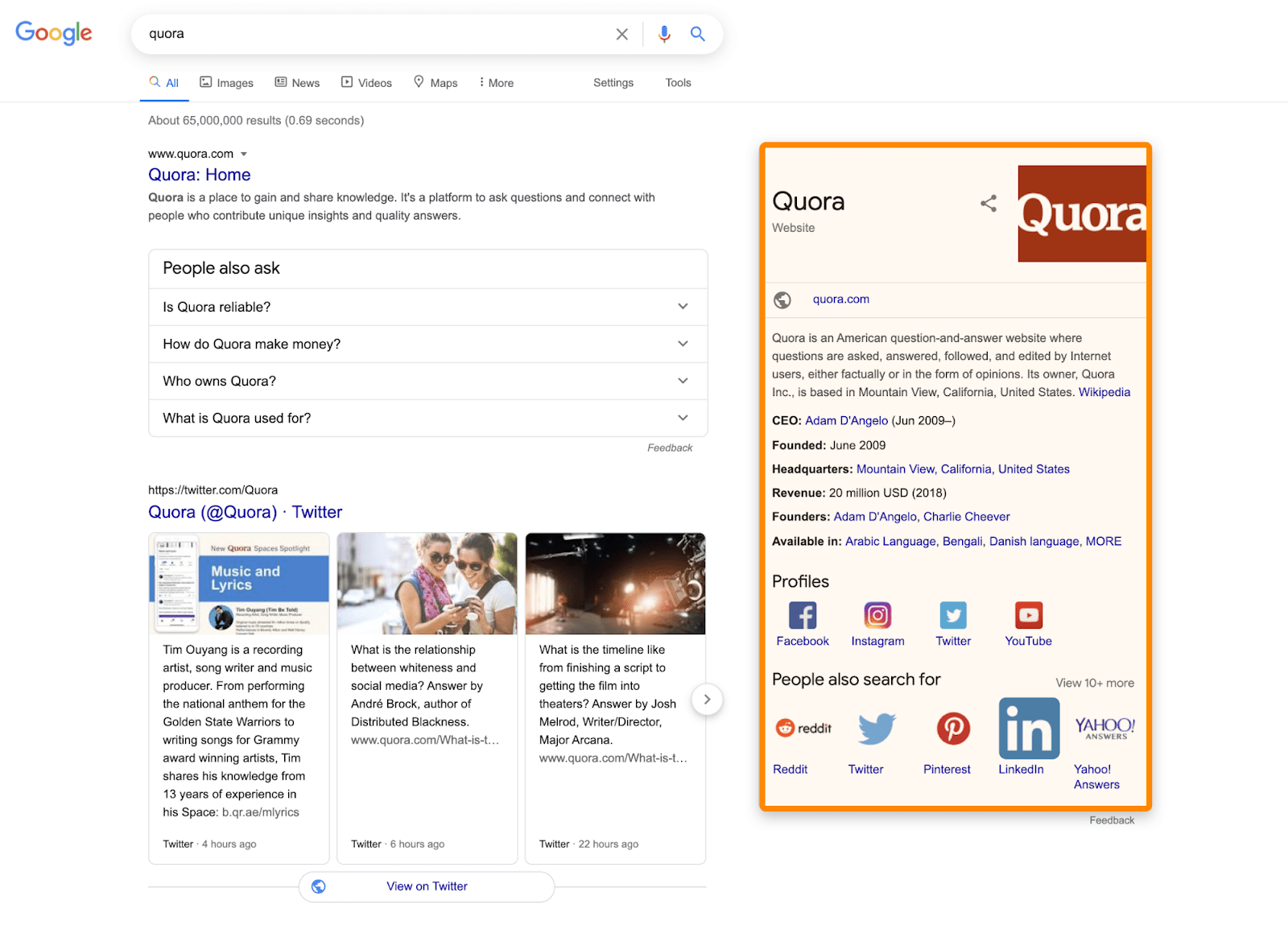
3. Support semantic search
Semantic search focuses on the meaning behind search queries instead of traditional keyword matching. It’s how Google manages to return perfect results when you search for something as vague as this:
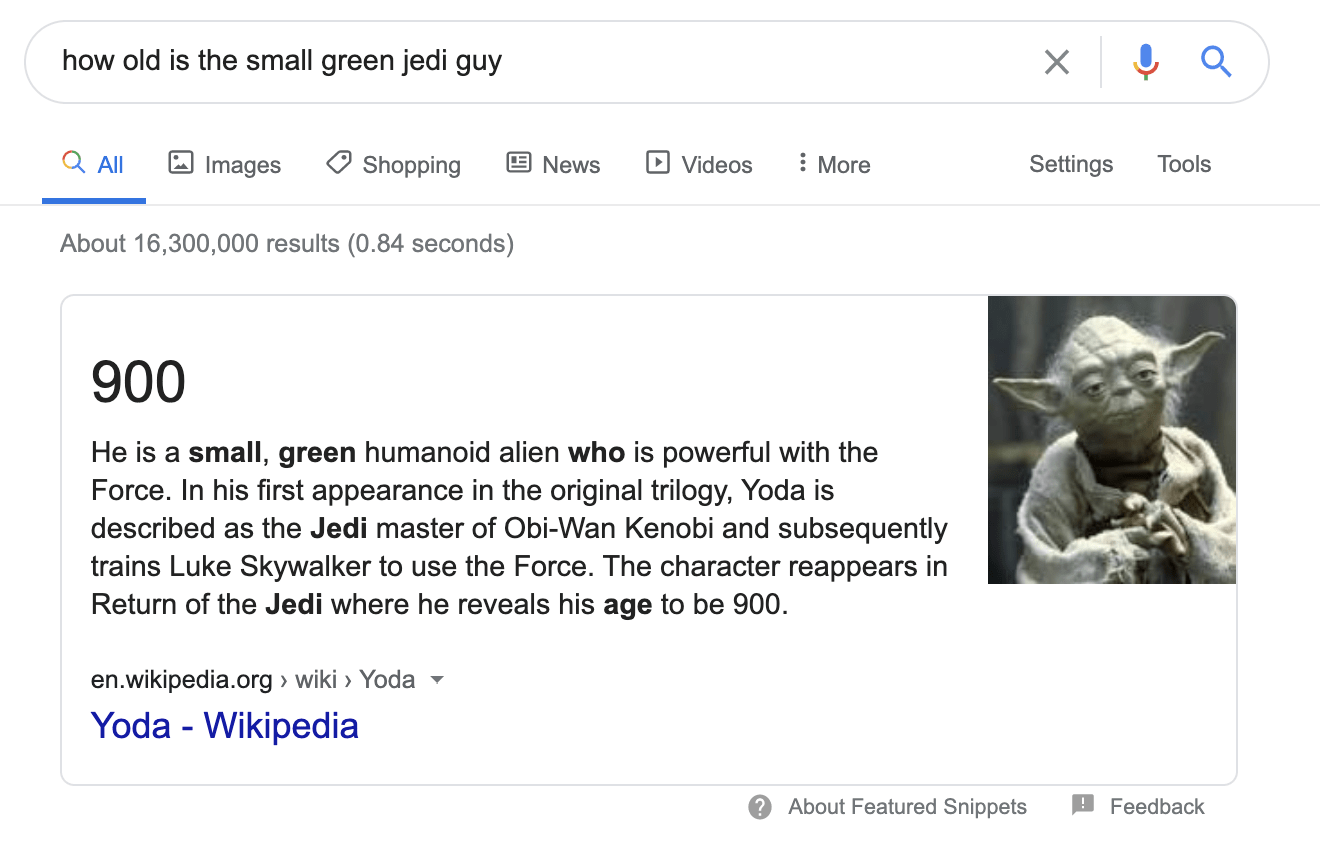
Because structured data helps Google to better understand what your pages are about, it may help them show up for more relevant search queries.
4. Support your E‑A-T
E‑A-T stands for expertise, authoritativeness, and trust. These three things are “what Google looks for in a web page.” Using structured data feeds Google information about your website, its content, and its authors, and makes it easier to assess your E‑A-T.
If I want to tell search engines that my first name is Michal, I need to look up how to annotate it. Looking up “name” in the schema.org vocabulary brings me to the givenName property:
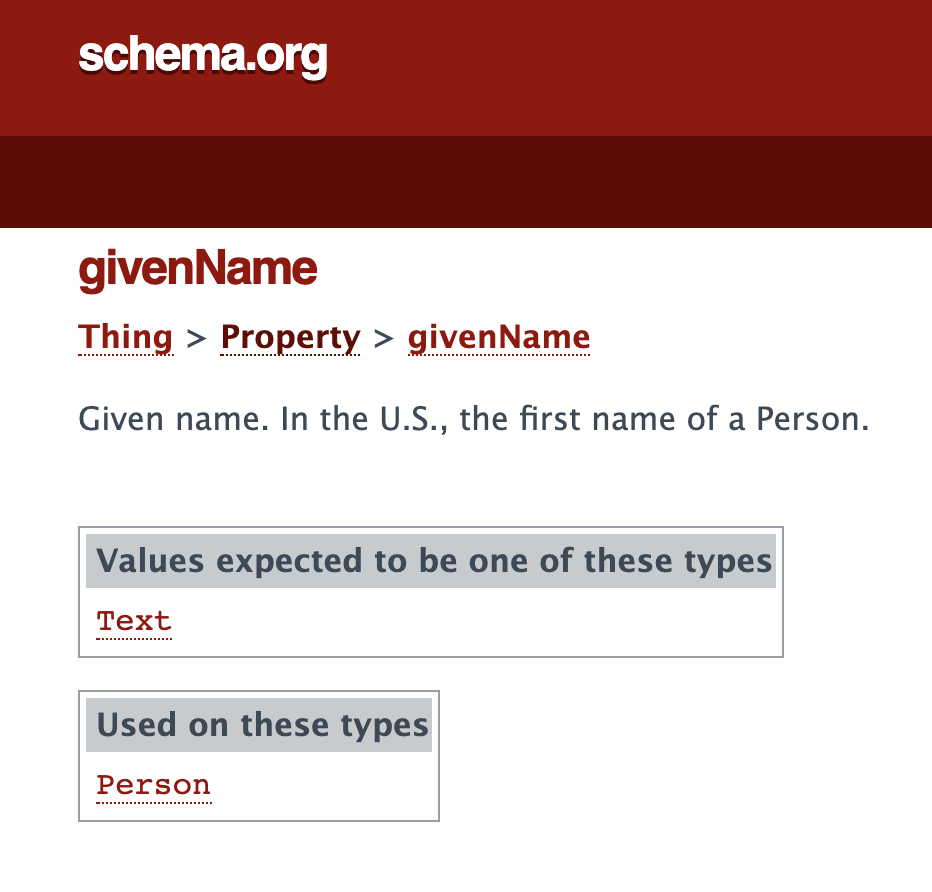
You need to use this in its exact form in your code. Using variations like FirstName, firstName, or given_name won’t work. Standardization is the key to structured data, and the schema.org vocabulary provides it.
Take, for example, an airline flight: schema.org has a lexicon to notate the type of aircraft, the departure gate, and even a description of the meal service:
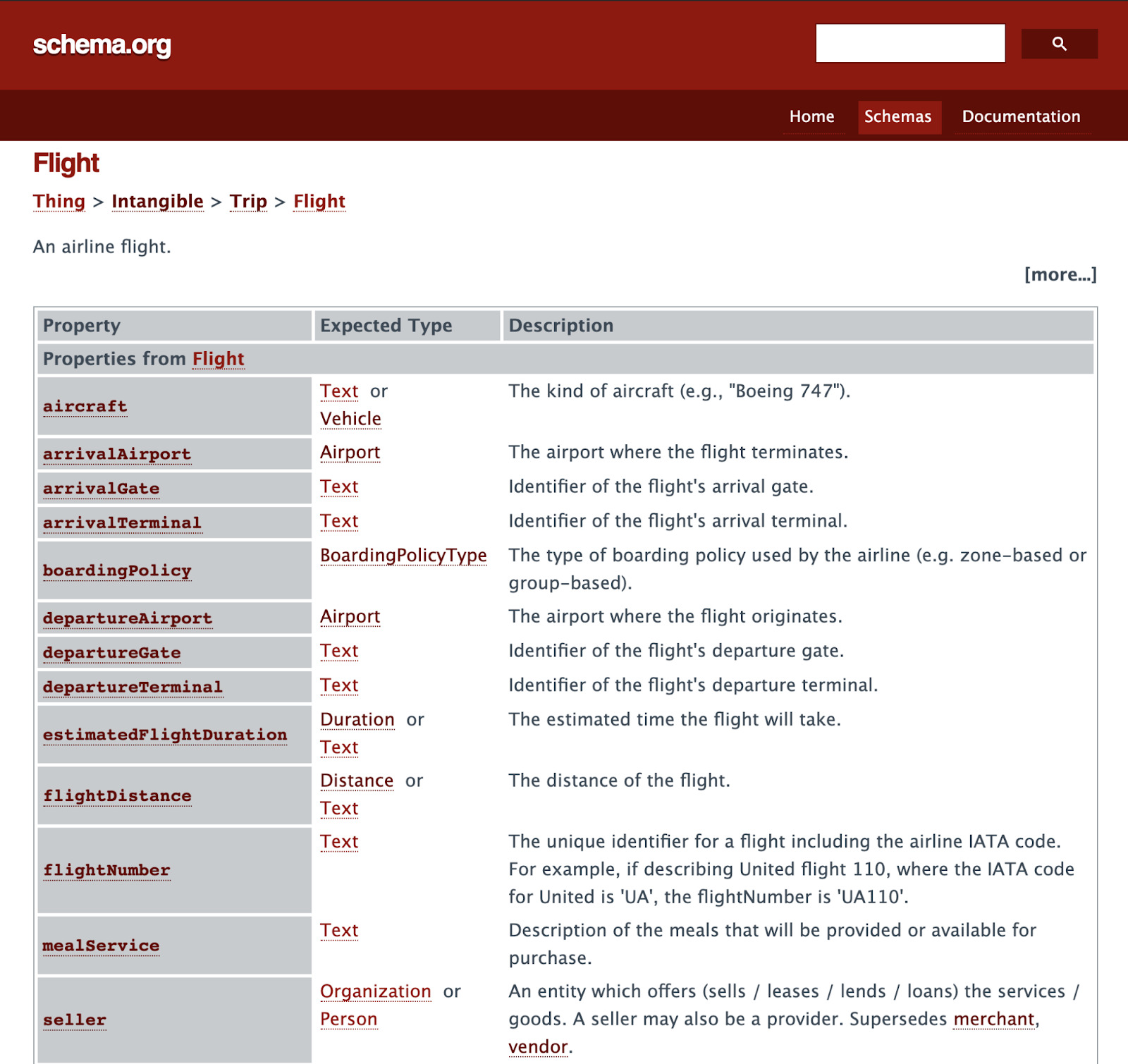
That’s it for the theory. Let’s take a look at how all of this works on your website.
<script type="application/ld+json">
{
"@context": "https://schema.org/",
"@type": "Organization",
"name": "Ahrefs",
"url": "https://ahrefs.com/",
"description": "Ahrefs is a software company that develops online SEO tools and free educational materials for marketing professionals.",
"email": "support@ahrefs.com"
}
</script>
This script can be placed anywhere in the <head> or <body> section of your HTML.
Microdata
Unlike JSON-LD, where structured data is in one big digestible block, Microdata is sprinkled throughout the page to markup content on-the-fly.
Here’s the same Organization markup as above, but in Microdata format:
<p itemscope itemprop="organization" itemtype="https://schema.org/Organization"> <a href="https://ahrefs.com/" itemprop="url"> <span itemprop="name">Ahrefs</span></a> <span itemprop="description">Ahrefs is a software company that develops online SEO tools and free educational materials for marketing professionals.</span> Contact us at: <span itemprop="email">support@ahrefs.com</span> </p>
As you can see, you mark up everything as it appears on the page. That’s fine for simple markup like this, but it can get very messy and near-impossible to manage for complex applications. Some SEO plugins use Microdata to generate your schema markup and do the work for you, though.
RDFa
RDFa works like Microdata. You markup HTML elements on the page, rather than providing markup in one big block like JSON-LD. It’s probably the least-used schema syntax, but you will still occasionally encounter it because it’s what Facebook’s Open Graph meta tags are based on.
Here’s how that same Organization markup looks using RFDa:
<p vocab="https://schema.org/" typeof="Organization"> <a href="https://ahrefs.com/" property="url"> <span property="name">Ahrefs</span></a> <span property="description">Ahrefs is a software company that develops online SEO tools and free educational materials for marketing professionals.</span> Contact us at: <span property="email">support@ahrefs.com</span> </p>
So, nothing much different from Microdata. But how do you know that all of this is a valid markup?
Testing your structured data
No sane person would deploy code without testing it first. Go to Structured Data Testing Tool, input your code snippet or URL, and see if the markup is valid.
This is what I get when I test the Microdata snippet:
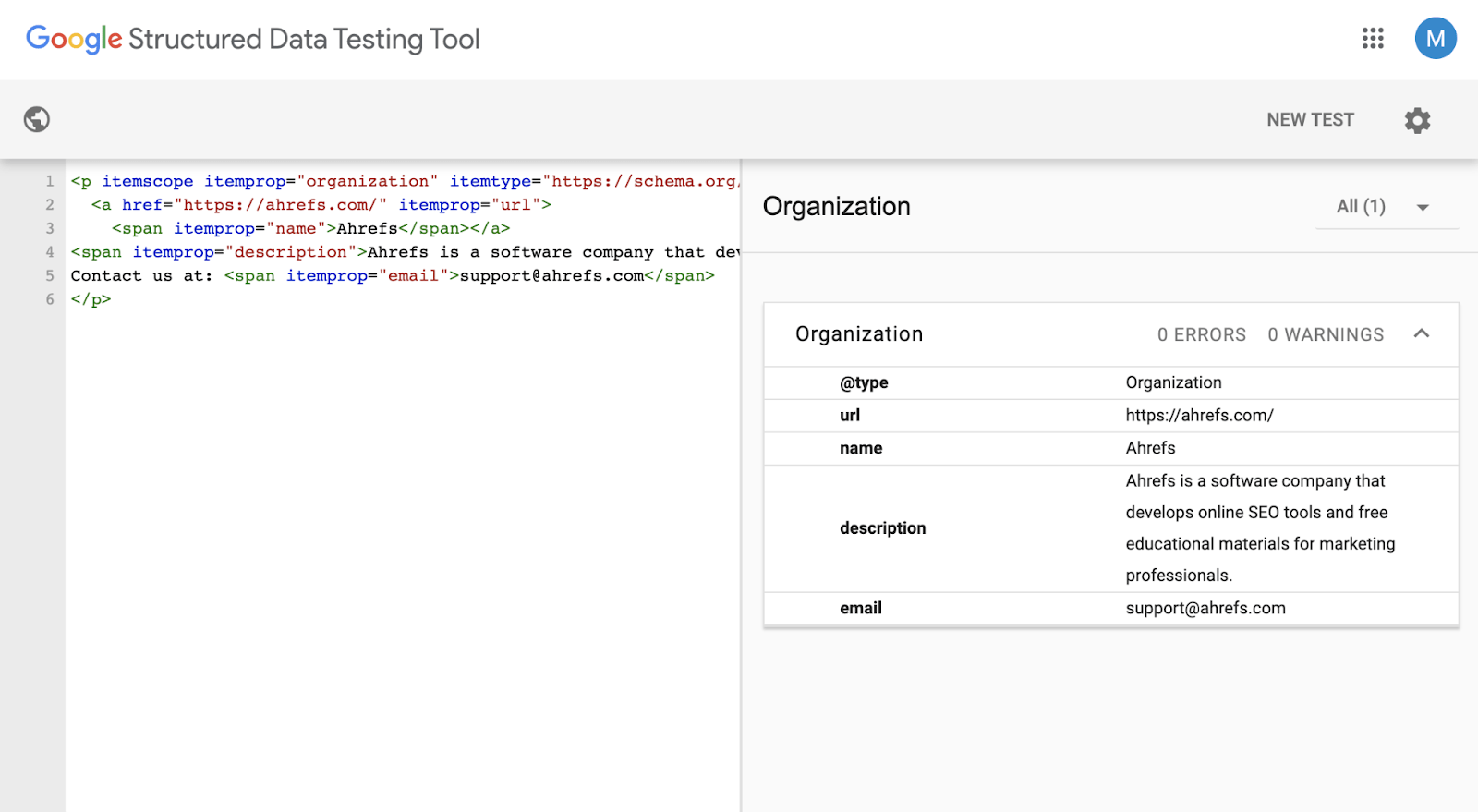
Unfortunately, Google will soon deprecate this tool, and only the Rich Results Test tool will remain. As you can tell from the name, it focuses on your eligibility for rich results, but let’s hope that Google will eventually combine both tools’ functionalities. Classy Schema is a great alternative tool as well.
Before you start marking up your content
Structured data isn’t rocket science, but it takes time to get into it, figure out what to prioritize, and learn how to deploy it at scale. Many CMS’ and plugins often take care of the most basic markup out of the box, but I want to make one thing clear:
For most people, there are way more important SEO tasks than deploying schema on your website. We expand on the prioritization and implementation in our dedicated schema markup post, where you’ll learn everything you need to know about this.
In fact, unless you have huge media coverage on Wikipedia and Wikidata, your Knowledge Panel will likely be much simpler:
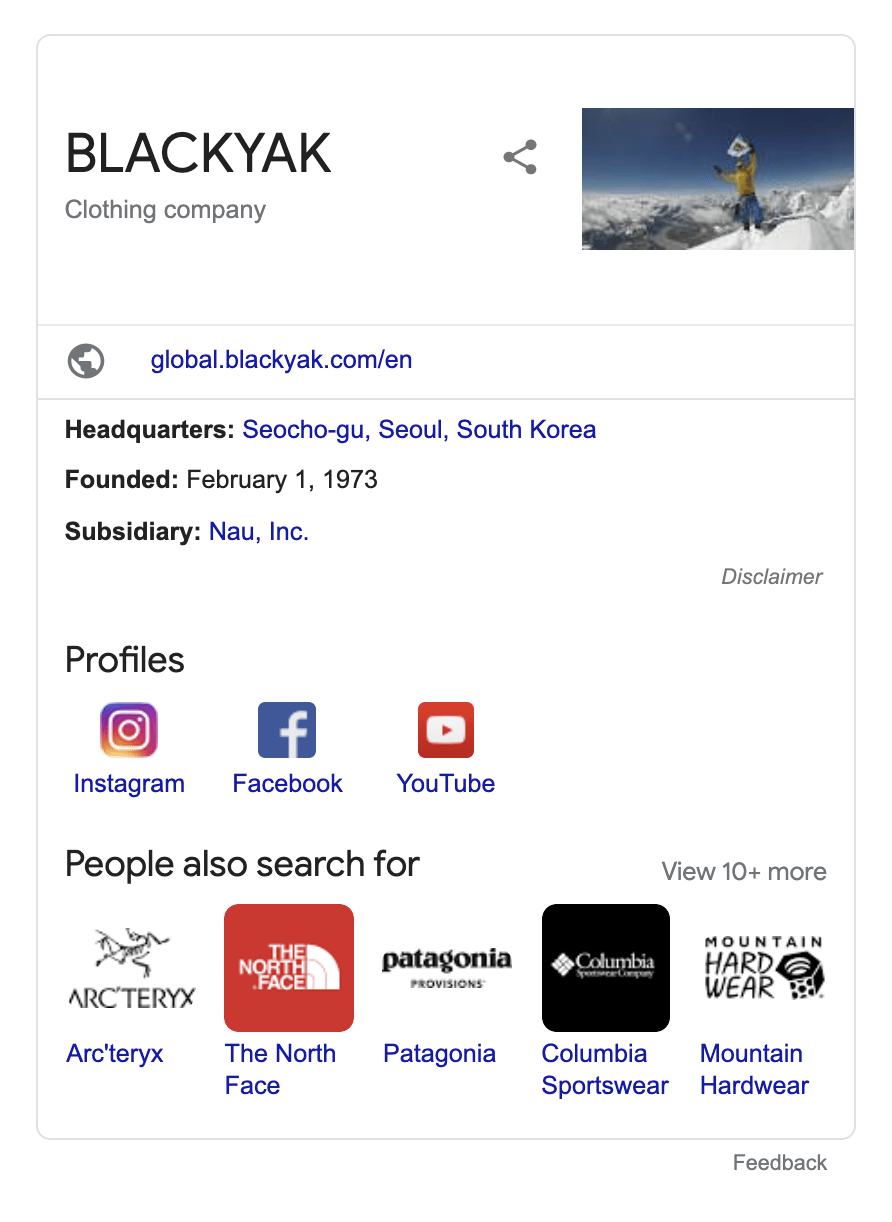
The point here is that you should convey consistent information about you or your business and link it all together.
So, make sure to unify all your company information on social media, other company profiles like Crunchbase, and authoritative websites in your niche. Then connect the dots using the sameAs schema property. We show how in our schema guide.
Final thoughts
Structured data is powerful, but it’s unlikely to be an SEO priority for most websites. There are just almost always more important things to focus on.
That said, implementing basic schema like Organization or Person markup is relatively quick and straightforward. You can probably do that in a few minutes, and you can learn how in our guide to schema markup.
Got questions? Ping me on Twitter.
Similar Posts

Mutt: Send and Read Emails from Linux Terminal
The post Mutt – A Command Line Email Client to Send Mails from Terminal first appeared on Tecmint: Linux Howtos, Tutorials & Guides .
As a system administrator, there are occasions when we need to send emails to users or others directly from the server. Traditionally, we’ve relied on
The post Mutt – A Command Line Email Client to Send Mails from Terminal first appeared on Tecmint: Linux Howtos, Tutorials & Guides.
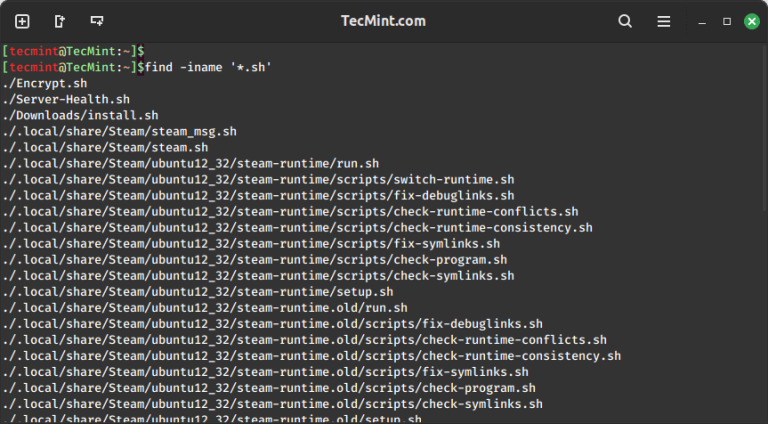
20 Must-Know Advanced Linux Commands for Mid-Level Users
The post Level Up Linux: 20 Advanced Commands for Mid-Level Users first appeared on Tecmint: Linux Howtos, Tutorials & Guides .
You may have found the first article, ‘Useful Commands for Beginners‘ very helpful, as it was intended for newbies, this article is tailored for middle-level
The post Level Up Linux: 20 Advanced Commands for Mid-Level Users first appeared on Tecmint: Linux Howtos, Tutorials & Guides.
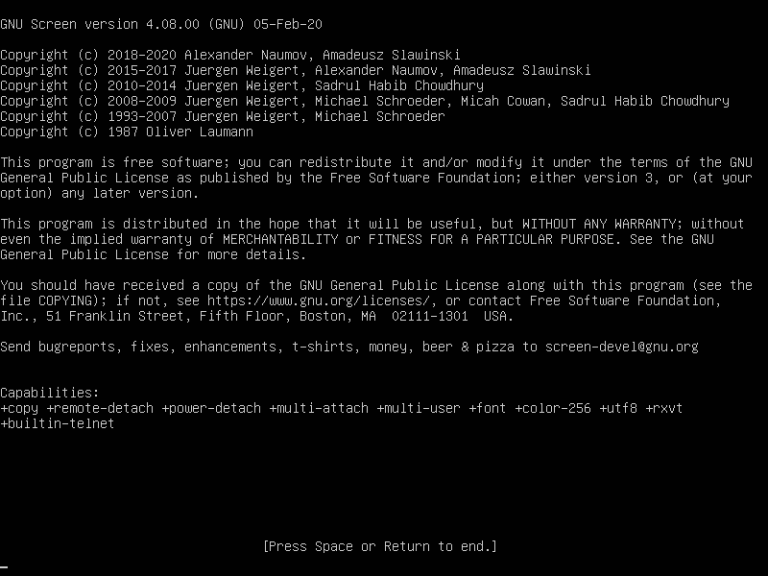
20 Screen Command Examples to Manage Linux Terminals
The post Getting Started with Linux Screen Command [20 Useful Examples] first appeared on Tecmint: Linux Howtos, Tutorials & Guides .
Brief: In this guide, we will discuss some useful examples of the screen command. By the end of this guide, users will be able to
The post Getting Started with Linux Screen Command [20 Useful Examples] first appeared on Tecmint: Linux Howtos, Tutorials & Guides.
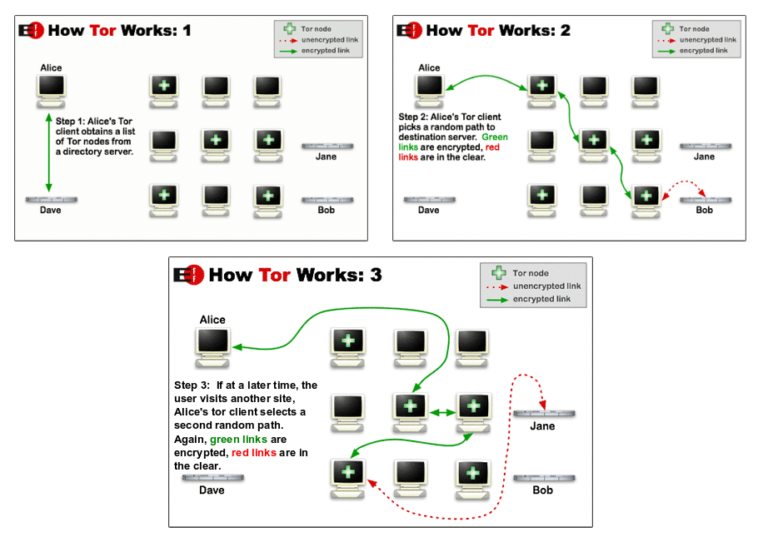
14 Best Security-Centric Linux Distros for Privacy in 2023
The post 14 Best Linux Distributions for Privacy and Security in 2023 first appeared on Tecmint: Linux Howtos, Tutorials & Guides .
Being anonymous on the Internet is not particularly the same as surging the web safely, however, they both involve keeping oneself and one’s data private
The post 14 Best Linux Distributions for Privacy and Security in 2023 first appeared on Tecmint: Linux Howtos, Tutorials & Guides.

How To Encrypt Root Filesystem on Linux
As a system administrator, you probably already know how important it is to encrypt your disks. If your laptop were to be stolen, even a novice hacker would be able to extract the information contained on the disks. All it takes is a simple USB stick with a LiveCD on it and everything would be…
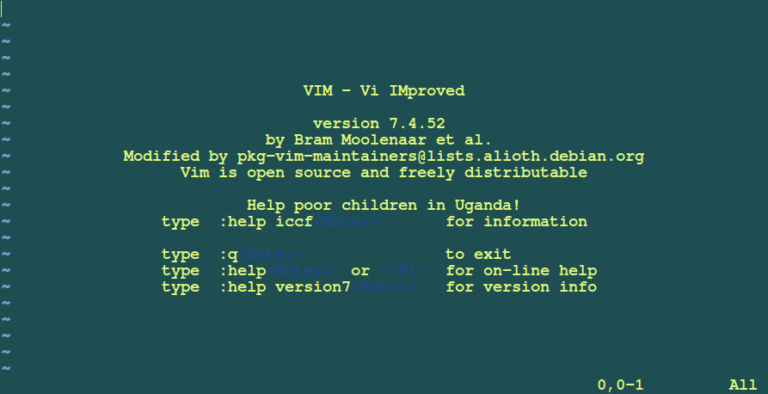
My Favorite Command Line Editors for Linux: What’s Yours?
The post My Favorite Command Line Editors for Linux – What’s Your Editor? first appeared on Tecmint: Linux Howtos, Tutorials & Guides .
Knowing how to edit files quickly and effectively via the command line is vital for every Linux system administrator. File edits are performed on a
The post My Favorite Command Line Editors for Linux – What’s Your Editor? first appeared on Tecmint: Linux Howtos, Tutorials & Guides.
